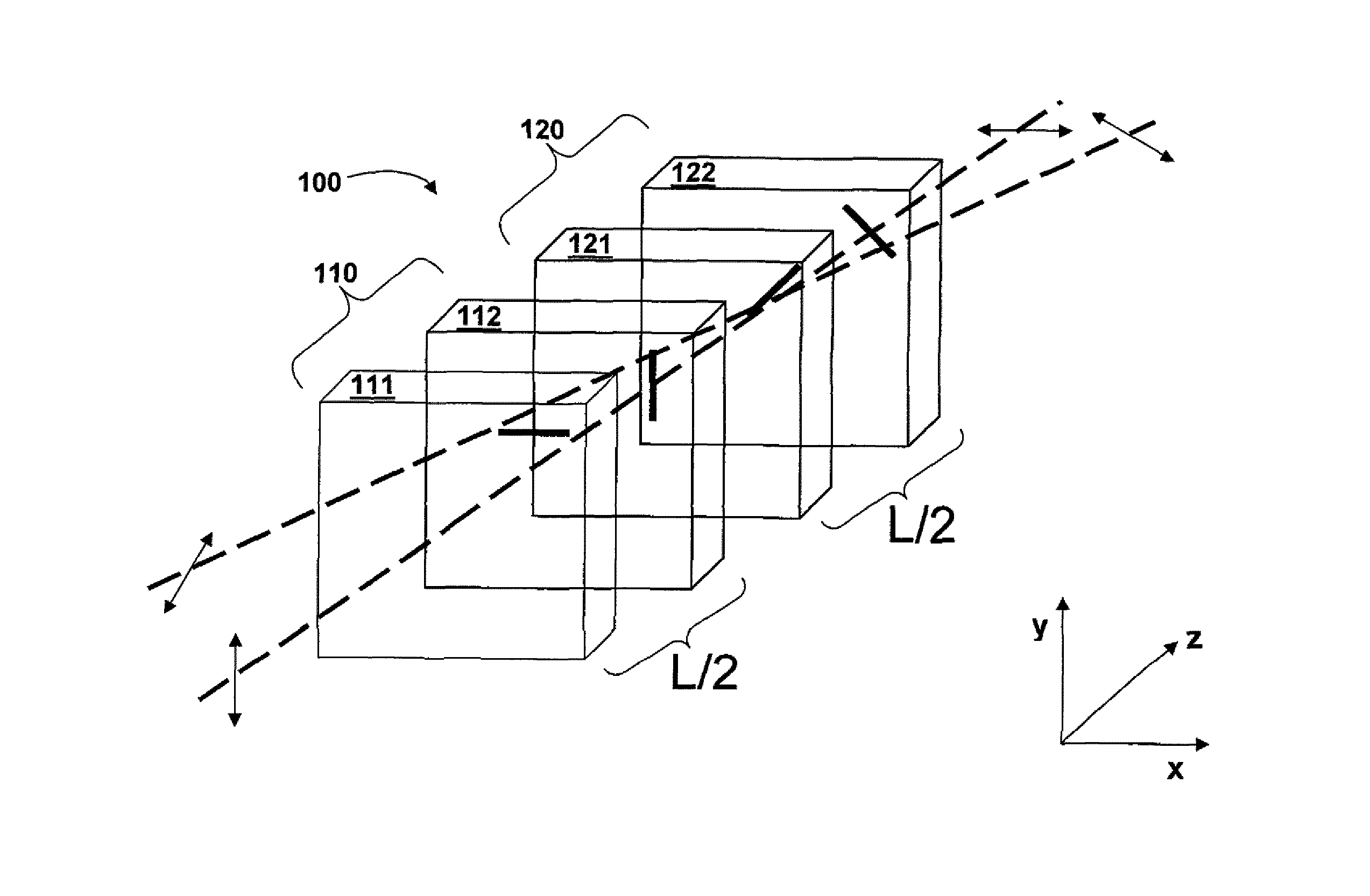Polarization-influencing optical arrangement, in particular in a microlithographic projection exposure apparatus
a microlithographic and exposure apparatus technology, applied in the direction of polarising elements, printing, instruments, etc., can solve the problems of additional difficulty in producing the desired output polarization distribution, the retardation provided by the polarization-influencing element of the arrangement,
- Summary
- Abstract
- Description
- Claims
- Application Information
AI Technical Summary
Benefits of technology
Problems solved by technology
Method used
Image
Examples
Embodiment Construction
[0049]FIG. 5 shows in schematic illustration a microlithographic projection exposure apparatus 500 comprising a light source unit 501, an illumination device 510, a mask 525 comprising structures to be imaged, a projection lens 530 and a substrate 540 to be exposed. The light source unit 501 comprises as light source a DUV or VUV laser, for example an ArF laser for 193 nm, an F2 laser for 157 nm, an Ar2 laser for 126 nm or an Ne2 laser for 109 nm, and a ray shaping optical unit that generates a parallel light beam. The rays of the light beam have a linear polarization distribution, when the oscillation planes of the electric field vector of the individual light rays run in a uniform direction.
[0050]The parallel light beam impinges on a divergence-increasing optical element 511. By way of example, a diffractive optical element (DOE) can be used as the divergence-increasing optical element 511. This element is followed by a zoom lens 512, which generates a parallel light beam having a...
PUM
| Property | Measurement | Unit |
|---|---|---|
| angle | aaaaa | aaaaa |
| angle | aaaaa | aaaaa |
| wavelength ranges | aaaaa | aaaaa |
Abstract
Description
Claims
Application Information
 Login to View More
Login to View More - R&D
- Intellectual Property
- Life Sciences
- Materials
- Tech Scout
- Unparalleled Data Quality
- Higher Quality Content
- 60% Fewer Hallucinations
Browse by: Latest US Patents, China's latest patents, Technical Efficacy Thesaurus, Application Domain, Technology Topic, Popular Technical Reports.
© 2025 PatSnap. All rights reserved.Legal|Privacy policy|Modern Slavery Act Transparency Statement|Sitemap|About US| Contact US: help@patsnap.com



